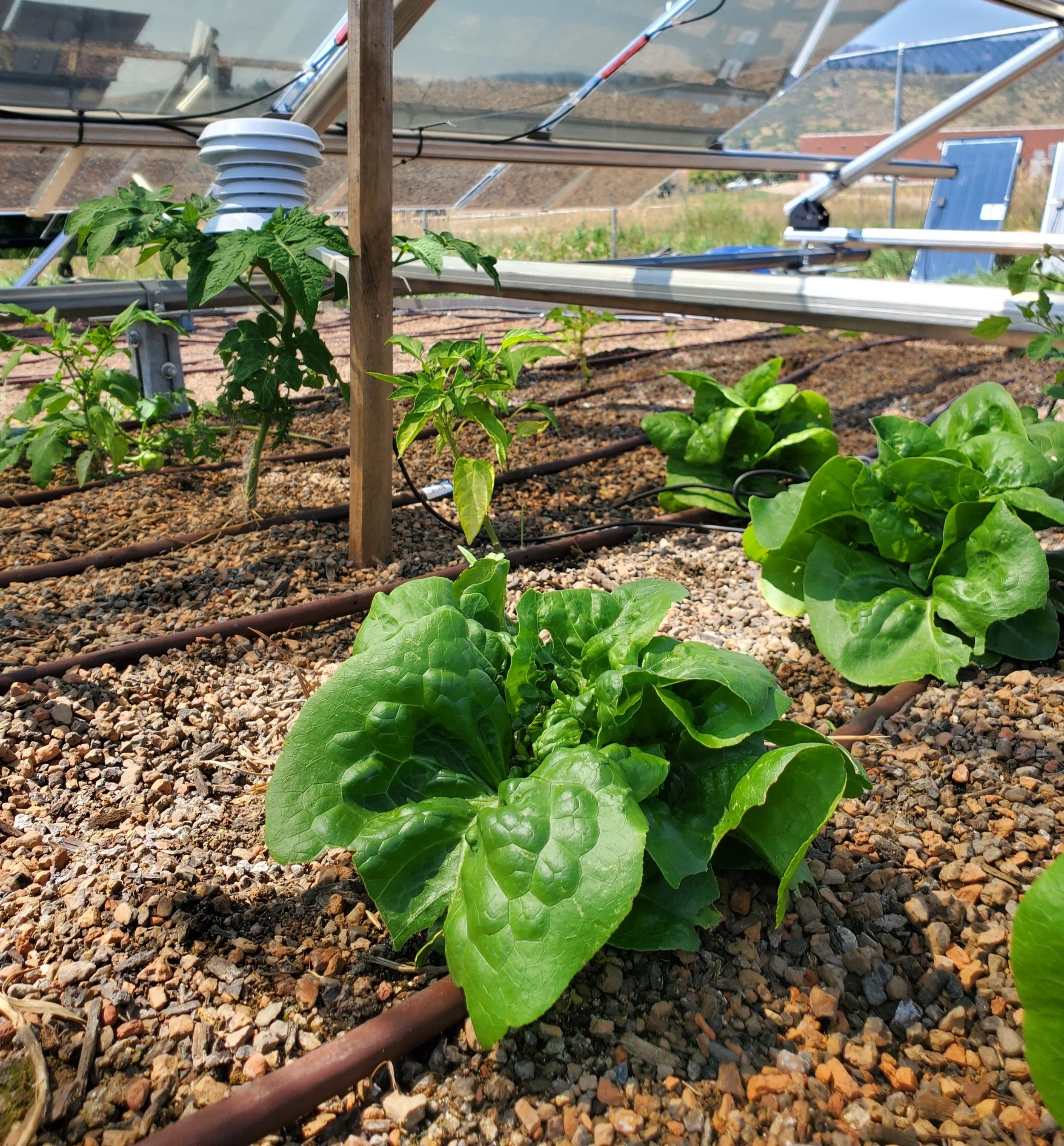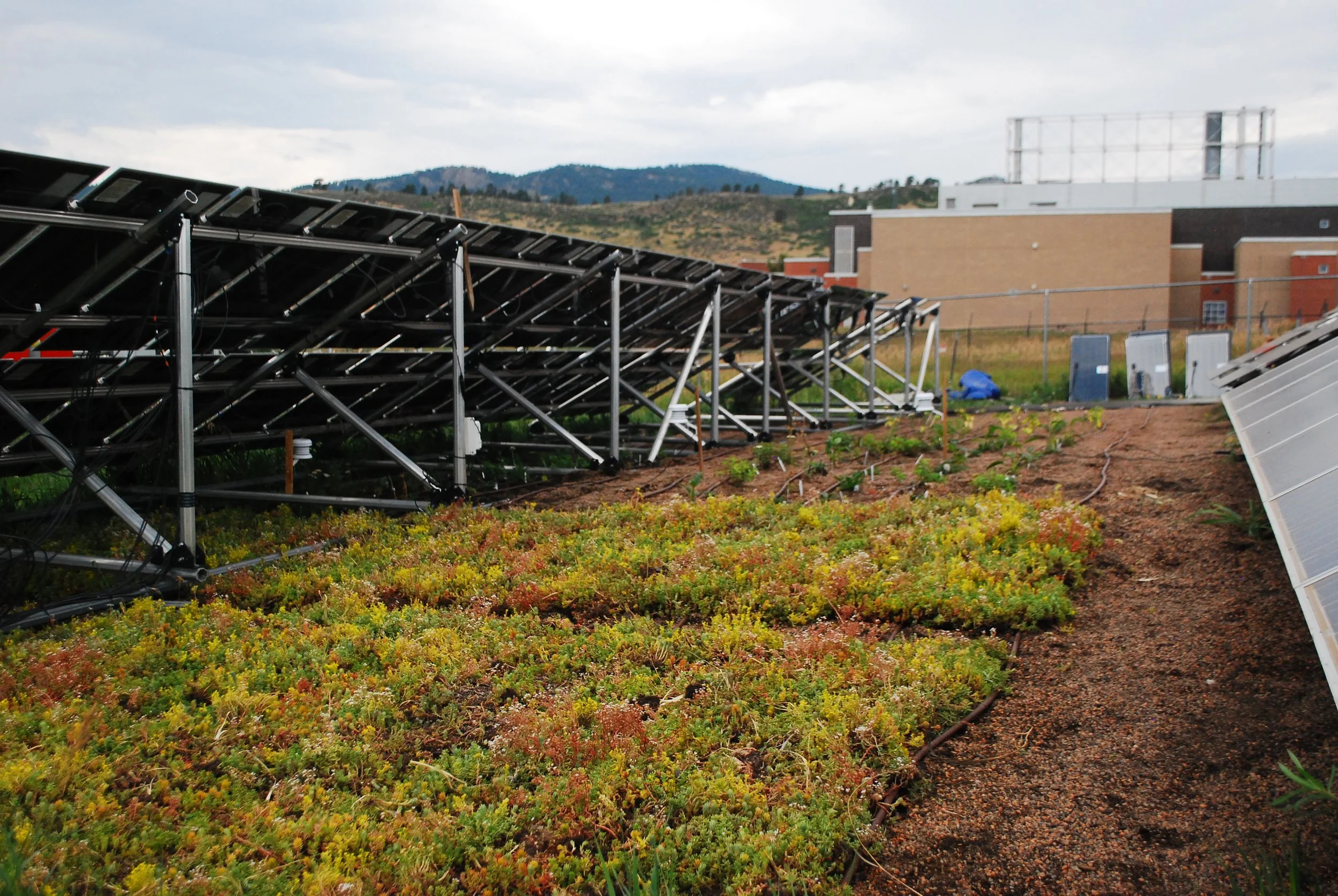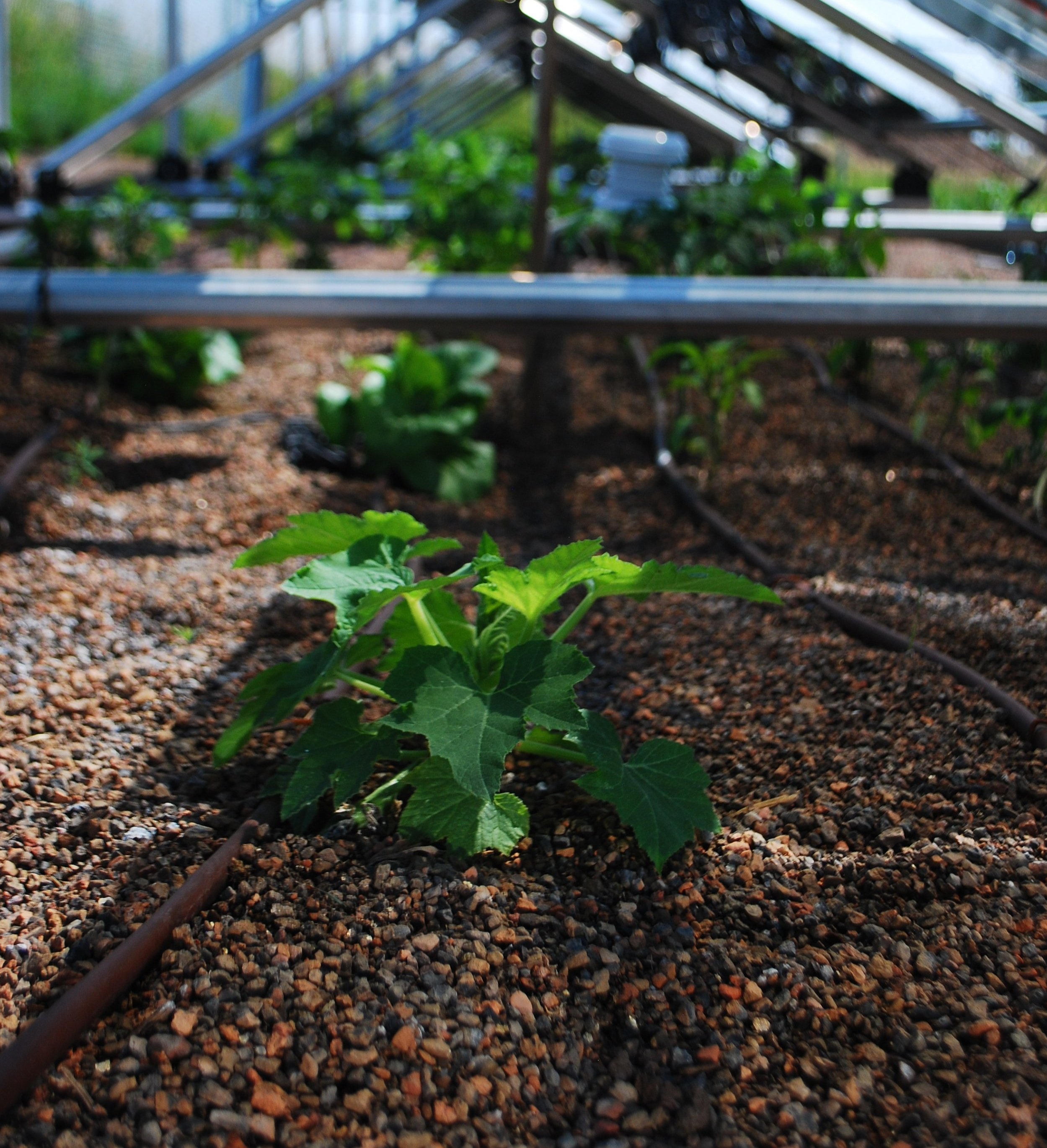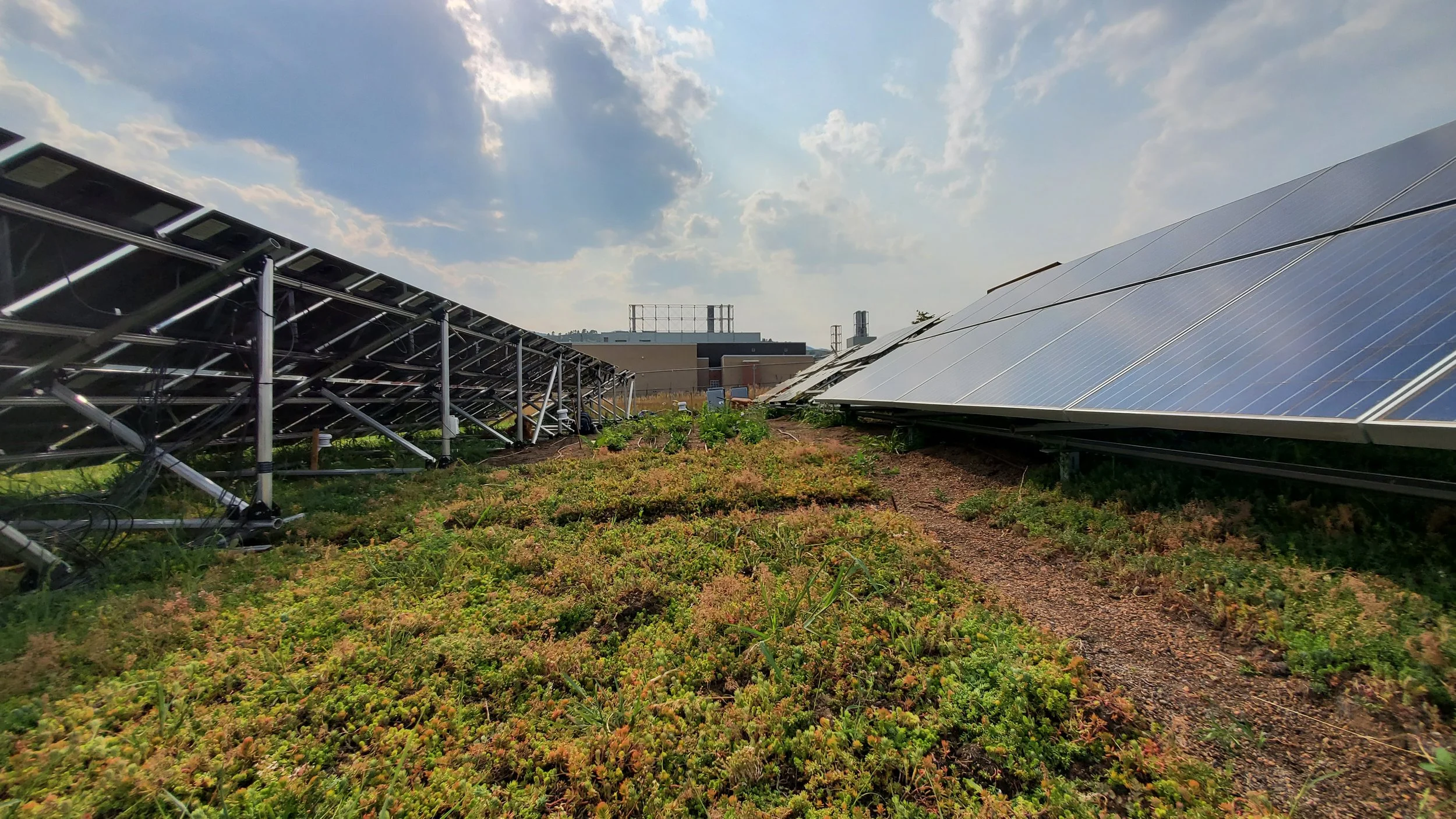Exploring The Potential of Rooftop Agrivoltaics
Advertisement
Lettuce growing under semitransparent solar panel modules in a simulated rooftop agrivoltaic system at the Colorado State University Foothills Campus. Photo: Thomas Hickey
For the first time in human history, more than 50 per cent of the population are residing in urban areas, and United Nations projections estimate that two-thirds of the world population will be urban dwellers by 2050. As human populations grow and increasingly urbanize, there will be greater stress on healthy food production and distribution systems. Producing food in a city can improve access to healthy food and reduce transportation related economic and ecological costs. With a lower relative proportion of rural dwellers, and likely a resultant decline of total farmers, our society must shift focus to growing food in urban areas to strengthen the resilience of food security in cities.
Sedum mats growing under opaque solar panel modules in a simulated rooftop agrivoltaic system at the Colorado State University Foothills Campus. Photo: Thomas Hickey
Urban areas have limited land space available for traditional food production to occur. Ironically, there is often a significant amount of unused space on the rooftops of buildings. Growing food on rooftops in urban areas is called rooftop agriculture (Bousselot et al., 2020). As stated in the publication by Buehler and Junge (2016), there were about 17.5 hectares of rooftop farms in the world, with the majority (about 15 hectares) in North America. Yet there are 492,230 hectares (about 1.2M acres) of rooftop area in the U.S. that is deemed suitable by the National Renewable Energy Laboratory (NREL) for solar panel installations (Gagnon et al., 2016). Most commercial and industrial roofs are flat, and therefore, ideal for rooftop agriculture applications. If just five per cent of all rooftop space is accessible for agriculture, that is still over 24,000 hectares (over 60,000 acres) of potential rooftop farms. This means that rooftop agriculture could have a significant impact on our urban food systems.
When solar panels are vertically integrated into rooftop agriculture systems, it is called rooftop agrivoltaics (Bousselot 2020). The term agrivoltaics is the contraction of the two words agriculture and photovoltaics, the latter is another term for solar panels. In this mutually beneficial system, plants evaporatively cool solar panels while solar panels partially shade plants from UV radiation and extreme temperature in the often water limited growing media on green roofs. The protection that solar panels provide. slows a plants’ water use rate, which in turn reduces the drought stress on food crops.
Advertisement
Yellow squash growing under semitransparent solar panel modules in a simulated rooftop agrivoltaic system at the Colorado State University Foothills Campus. Photo: Thomas Hickey
Many horticultural specialty crop growers in high solar radiation locations like Colorado currently use shade cloth or floating row covers in their operations to reduce plant stress and sun scalding on high-value crops. Solar panels, especially semi transparent panels that allow some light through, could have the same effect on horticultural crops as shade cloth while also generating electricity. With extreme weather events (i.e. high wind, hail, heavy rain etc.) on the rise across the world, agrivoltaics can modulate these extreme conditions and add income generation for farmers (Barron-Gafford et al., 2019).
We know that lettuce takes up more carbon and grows larger leaves when grown under solar panels (Dinesh and Pearce, 2016). However, we know little about the shade tolerance of most horticultural crops in rooftop agrivoltaics (Dinesh and Pearce, 2016); and especially the way crop yields are affected by shade. If the trends presented in green roof research in Bousselot et al. (2017) can be used as an example, the growing conditions under the solar panels will provide protection for horticultural crops through lower daily temperature fluctuations, lower evapotranspiration rates, and less intense UV radiation.
Sedum mats (foreground) and native plants for pollinators (background) growing under opaque solar panel modules in a simulated rooftop agrivoltaic system at the Colorado State University Foothills Campus. Photo: Thomas Hickey
Rooftop agrivoltaics have the potential to revolutionize urban farming. Just like the multifunctionality of agroforestry, which arguably revolutionized rural farming in the 1980s and 1990s, the multifunctionality of rooftop agrivoltaics can provide parallel co-benefits in urban spaces. Agroforestry has the co-benefits of growing food, sequestering carbon, and providing other ecosystem services in the same space – rooftop agrivoltaics is an urban analog. Although, rather than storing energy in the form of slow-growing biomass (wood), it harnesses the power of a rapidly renewable source – the sun. To take the analogy further, rooftop agrivoltaics provide additional niches in the urban farming environment, so they can provide parallel ecosystem services, just like agroforestry is well documented to do (Jose 2009).
While rooftop agrivoltaics is in its infancy, this vertically integrated approach to urban land use can increase resilience in urban food systems, expand renewable energy production, and decrease water consumption. The benefits associated with rooftop agrivoltaics warrant further investigation as we re-envision underutilized spaces in urban environments. Colorado State University is continuing research on rooftop agrivoltaics to analyze the growing conditions, yield, and power generation potential of these systems (Cornelius 2022).
Join Jennifer Bousselot and others at the Denver Mile Hile Green Roof Symposium in person on July 29th.
Advertisement
Jennifer Bousselot, Ph.D., GRP is an assistant professor of horticulture at Colorado State University in the Department of Horticulture and Landscape Architecture.
Thomas Hickey, Jr. is a Master of Science graduate student at Colorado State University and earned his Bachelor’s in Landscape Architecture, also at Colorado State University.
References
Barron-Gafford, G., M. Pavao-Zuckerman, R. Minor, L. Sutter, I. Barnett-Moreno, D. Blackett, M. Thompson, Y. Dimond, A. Gerlak, G. Nabhan, and J. Macknick. 2019."Agrivoltaics provide mutual benefits across the food–energy–water nexus in drylands." Nature Sustainability, 2: 1-8. https://doi.org/10.1038/s41893-019-0364-5
Bousselot, J. 2020. Rooftop agrivoltaics. TEDx Cherry Creek Climate Countdown. https://youtu.be/pobj34HuHO8
Bousselot, J. V. Russell, L. Tolderlund, S. Celik, B. Retzlaff, S. Morgan, I. Buffam, R. Coffman, J. Williams and M. Mitchell. 2020. "Green roof research in North America: A recent history and future strategies." Journal of Living Architecture, 7(1): 27-64. https://doi.org/10.46534/jliv.2020.07.01.027
Bousselot, J., T. Slabe, J. Klett, and R. Koski. 2017. “Photovoltaic array influences the growth of green roof plants.” Journal of Living Architecture, 4(3): 9-18. https://doi.org/10.46534/jliv.2017.04.03.009
Buehler, D. and R. Junge. 2016. “Global trends and current status of commercial urban rooftop farming.” Sustainability, 8: 1108. https://doi.org/10.3390/su8111108
Cornelius, C. 2022. “Oh, the places you’ll grow.” Colorado State University STATE Magazine. https://magazine.csusystem.edu/2022/01/03/oh-the-places-youll-grow/
Dinesh, H. and J.M. Pearce. 2016. “The potential of agrivoltaic systems.” Renewable and Sustainable Energy Reviews, 54: 299-308. https://dx.doi.org/10.1016/j.rser.2015.10.024
Gagnon, P., R. Margolis, J. Melius, C. Phillips and R. Elmore. 2016. “Rooftop solar photovoltaic technical potential in the United States. A detailed assessment (No. NREL/TP-6A20-65298).” National Renewable Energy Lab. (NREL), Golden, CO.
Jose, S. 2009. “Agroforestry for ecosystem services and environmental benefits: an overview.” Agroforestry Systems, 76(1): 1-10.








